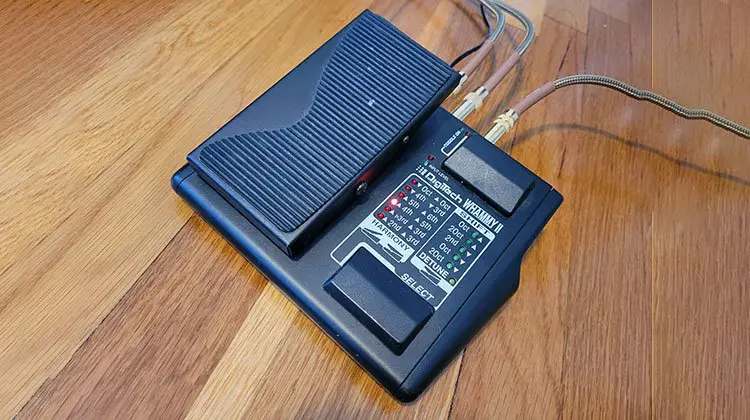Do you want to know what a pitch shift pedal can do? Pitch-shifting pedals seem to defy physics, creating various sounds that seem like they couldn’t possibly come from just one guitarist. They morph your guitar’s sound to fit an array of different situations, from Thin Lizzy style harmonized solos to high pitched tonal dive bombs reminiscent of Tom Morello or Jack White.

Generally speaking, pitch shifters generate notes other than the one you are currently playing. The notes they generate usually correspond to a specific interval set by the guitarist. For example, the extra note could play a perfect 5th, a major 7th, or an octave.
Octave pedals have improved leaps and bounds in recent years. Digital technology has created opportunities that were unthinkable only a couple of decades ago. There are several features to keep in mind that make these pedals so great.
- Range of intervals
- Dry/wet blend
- Expression pedal compatibility
- Polyphony
- Tracking
- Musical intelligence
Range of intervals
An interval is the difference in pitch between two notes. Some intervals are very small or nonexistent. Two notes of the same patch played at the same time are called unison. It’s common in synthesizers that generate two tones to have a detune option that only slightly lowers or raises the pitch of the tone. The somewhat out-of-tune note gives the effect of a double-tracked instrument for a thicker and wider sound.
Other, farther apart, intervals can be very pleasing in harmonies. One of the most popular interval notes is the 5th, the second note in a power chord. Octaves, which complete the musical scale, are so popular that octave pedals have a dedicated genre.
For more information about octave pedals, please see our articles What Does an Octave Pedal Do? and Best Octave Pedal for Guitar.
As you experiment, you may find situations that call for harmonies of all different types of intervals. Some pitch shifters are very limited in what they offer, while others provide complete freedom.
Dry/wet blend
Musical harmonies can be incredibly attention-grabbing, especially when used with an electric guitar. For reference, listen to the guitar solo in Thin Lizzy’s “The Boys are Back in Town.”
The ability to blend the different intervals creates new opportunities for using pitch shifters. As cool as it is, some songs call for a softer touch. Adding in a subtle 5th or octave is sometimes what’s needed to cut through a loud mix. Other times, a little bit of a sub-octave fattens up a tone just enough.
Expression pedals
The use of expression pedals with pitch shifters has wholly revolutionized the guitar world. A lot of Tom Morello’s famous Rage Against the Machine and Audioslave solos that blew people’s minds come from this exact combination.
Expression pedals allow you to control a parameter of the pedal’s effect in real-time with your foot. Instead of taking your hand off the guitar and bending down to fiddle with controls, you can tweak them with your foot like you would with a wah pedal. It’s like having a third hand! Controlling the pitch shifter with an expression pedal allows you to generate massive sweeps across musical notes while playing.
Some pedals include an expression pedal built into the unit. Although this takes up extra real estate on a pedalboard, you can ensure that the parameter controls are dialed in perfectly with the pedal’s circuits. More commonly, pedals will provide an input jack to connect an external expression pedal.
Polyphony
While there are several things to consider when choosing between monophonic or polyphonic octave pedals, better polyphony is always the way to go when selecting a pitch shifter. Pitch shifters shine when creating beautiful harmonies throughout melodies and guitar solos. The glitchy tones of a monophonic pedal have no place in the world of pitch shifters that rely on technical precision.
Tracking
Inside every pitch-shifter is a digital signal processor (DSP) that interprets the note being played and creates one or more interval notes on top of it before sending the signal to the amplifier. To produce consistently clean notes, this needs to happen very, very quickly.
Lower-quality pedals don’t track notes quite as quickly as their higher-quality cousins. Even so, they should be fast enough for most guitarists. But if you’re a super-shredder who rocks blazingly fast solos, you might run into problems with your pedal trying to keep up.
Intelligence interval production
Older pitch shifters tended to produce intervals that were always strictly based on the specific note played. However, sometimes that note wouldn’t fit the larger context within the musical key of the song.
Newer pitch shifters have intelligent technology that creates an interval relative to the musical key you’re playing. Some can even account for different scales within that musical key.
Conclusion
Every pitch shifter adds a note in addition to the one you’re playing. But most pitch shifters do much more than that. Slightly detuned notes can widen your sound enough to fill a large room. Pitched harmonies can add new layers of complexity to melodies and solos. Quickly tweaking the controls with an expression pedal adds a whole new bag of tricks to your playing. Pitch shifters open up a world of creativity that is sure to change the way you play and write songs.
